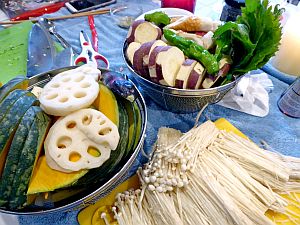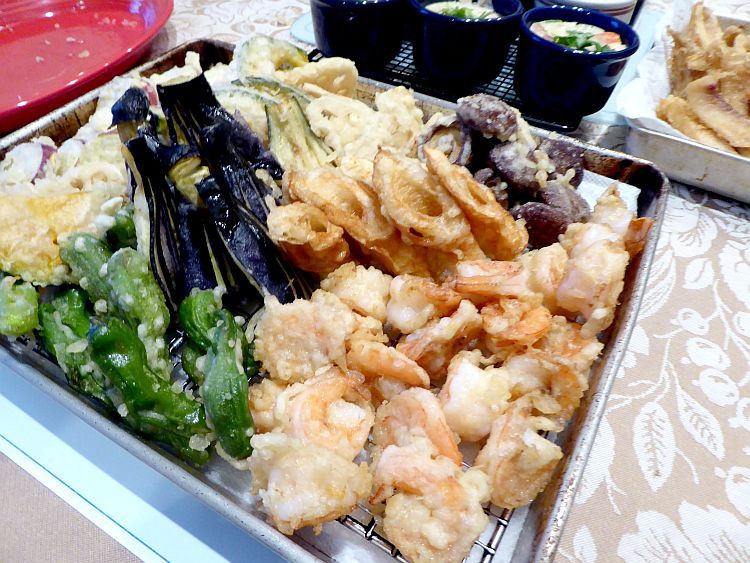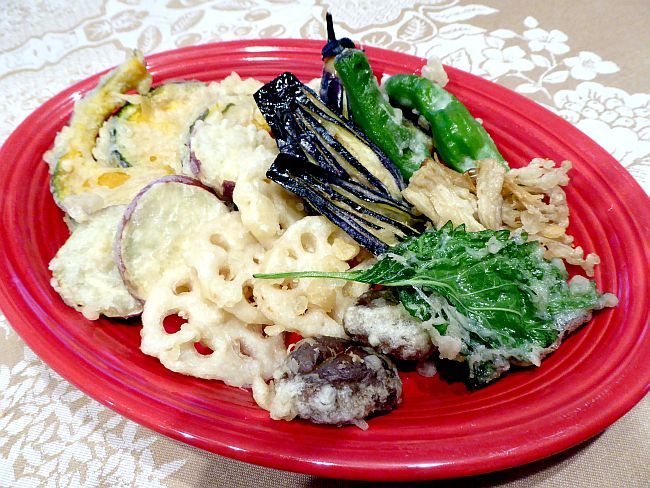
clockwise: sweet potato, shishito, shiso leaves, enoki, lotus root, kabocha
COMING from a big family of eight siblings living in different continents, our Arambulo family reunions are few and far between.
My two sisters Ana and Enchay are in California, elder brother Primo III in Maryland, brothers, Julio and Max in Toronto,
Canada, while my youngest brother Raul and I live in Cebu. Whether we get together for a happy or sad occasion, cooking and eating are always on top of our activities that we share with a common passion, spiced up with unlimited dose of humor and laughter.
The family agrees that Max’s son Christian’s marriage to a Japanese, Sayuri Uchida, is truly a blessing. How Christian and Sayuri met is quite serendipitous. Polite and soft-spoken Sayuri hails from Gunma, a mountainous landlocked Prefecture in Honshu Island, where she learned how to cook assisting her grandmother who owned a restaurant.

Her fired up interest to earn English as a second language brought her to UP Los Baños as an exchange student for two weeks.
Her stay gave her an eye-opener into the traditional agricultural ways, including plowing the field pulled by a carabao.
For further English Studies for one-and-a-half years, she chose the University of Toronto in Canada where she met Christian.
Our get-together last month, albeit a sad one, brought all seven siblings in our sister Enchay’s lovely home in San Diego, California.
Christian and Sayuri with their five-year-old daughter Rio flew in from Toronto to be one with the family with the passing of our beloved “Nanay.”
And the much-awaited opportunity for Sayuri to cook finally presented itself.
Max proudly announced we were having an authentic Japanese dinner one night.
Christian and Sayuri did the food shopping for a very impressive five-course menu: Miso Soup, Chawanmushi, Soba Noodles, Tempura and Karaage.
Like a pro, Sayuri was single-handedly in control of the kitchen with assistance from some of us.
Very organized, she set about organizing and arranging the ingredients, with impressive skill.
While cooking, Sayuri took the time to explain the different the ingredients.
A meticulous dish, Chawanmushi, which literally means “steamed in a tea bowl,” is a savory Japanese steamed egg custard that can be served hot or cold. Soaked and sliced shiitake mushrooms, thinly sliced kamaboko (fish cake), chicken pieces marinated in sake, ginnan (Japanese Ginkgo beans), mitsuba (Japanese coriander) are arranged in the ramekins while the custard was prepared using beaten egg, dashi and mirin. Dashi is a classic Japanese soup stock available in stores.

Meanwhile chicken pieces for the Karaage have been marinated in garlic, ginger, soy sauce, sake (rice wine).
Raw egg is added to the chicken pieces just before coating with flour/cornstarch mixture.
Karaage remains juicy by cooking the chicken pieces twice; removing pieces after cooking in medium heat and finished off in high heat until golden brown. The Tempura was scrumptious: kabocha (Japanese squash), lotus root, shiitake mushrooms, shishito peppers, sweet potato, egg plant, enoki mushrooms, shiso leaves (perilla or beefsteak plant), shrimps, kamaboko (fish cake).
Sayuri prepared the Tempura sauce using boiled dashi, soy sauce, mirin, pinch of sugar and grated daikon was added after mixture was cooled. Oishii!

